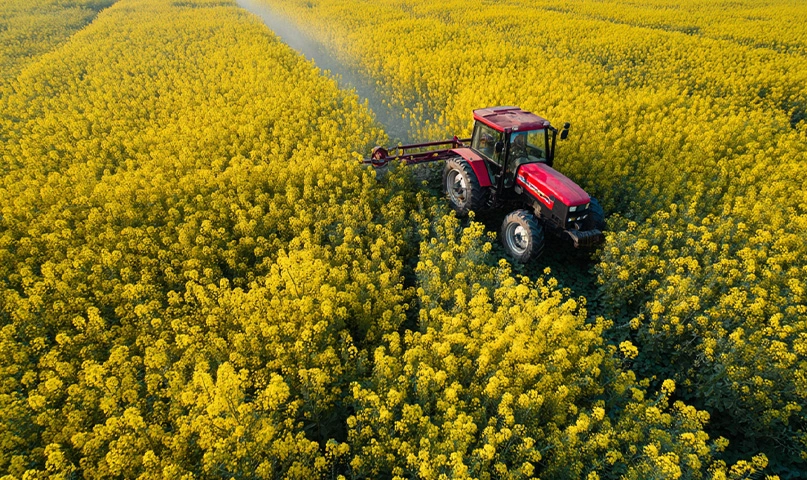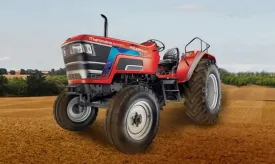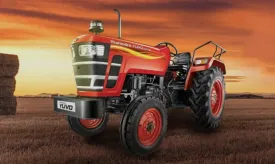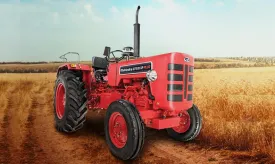Maize farming: Tractor and implement guide for better yields

Maize farming plays a vital role in global food and fodder production, and in countries like India, it has become an increasingly important crop for both food security and income generation. With growing demand in sectors such as poultry feed, processed food, ethanol production, and starch manufacturing, the focus has shifted toward achieving higher yields, especially on limited landholdings.
To ensure better productivity and profitability, modern tractor implements and mechanized tools like the maize seeder machine are becoming indispensable. They not only save time and labour but also improve operational efficiency and crop output. This blog serves as a comprehensive guide on how tractors and implements can help you achieve better maize yields, whether you're a smallholder or a commercial maize farmer.
Why mechanization is key in maize farming
Unlike traditional farming methods, which often rely on manual labor and animal power, mechanized maize farming leverages the power of tractors and implements to optimize every stage of cultivation—right from land preparation to sowing, fertilizing, irrigation, and harvesting.
The benefits include:
- Timely sowing and harvesting
- Uniform seed placement
- Precise fertilizer and pesticide application
- Reduced labor dependency
- Lower input costs per acre
- Significantly higher yields
Mechanization ensures consistency and speed, both critical for a crop like maize that thrives on timely operations and precise agronomy.
Essential Tractor Implements for High-Yield Maize Farming
Let’s explore the tractor implements that play a crucial role in boosting the productivity of maize.
1. Rotavator or Cultivator – for land preparation
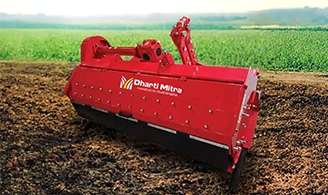
Preparing the soil properly is the foundation of high-yield maize farming. A rotavator or cultivator attached to a tractor helps break up clods, incorporate residues, and level the field. It ensures a fine tilth that's ideal for sowing.
Benefits:
- Reduces soil compaction
- Enhances aeration and water retention
- Improves root penetration for maize plants
2. Maize seeder machine – for precision sowing
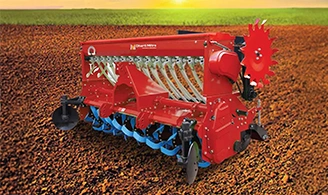
The maize seeder machine is a game-changer. This implement sows seeds at precise depths and spacing, ensuring uniform germination and optimal plant population—a key factor in achieving high yields.
Modern maize seeders can perform multiple functions:
- Seed metering
- Fertilizer application (some models)
- Row marking
Benefits:
- Accurate seed placement and spacing
- Higher germination rate
- Reduced seed wastage
- Saves time and labor
3. Fertilizer spreader – for nutrient application
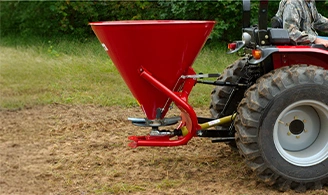
Maize is a nutrient-demanding crop, especially during its early growth stages. A fertilizer spreader or applicator ensures even distribution of nutrients like nitrogen, phosphorus, and potassium.
Benefits:
- Uniform nutrient delivery
- Increases nutrient-use efficiency
- Promotes stronger plant growth
For best results, combine with soil testing and follow a recommended fertilization schedule.
4. Boom sprayer – for weed and pest control

Weeds and pests can drastically reduce maize yield if not controlled early. A boom sprayer attached to a tractor helps apply herbicides, fungicides, and insecticides evenly across large fields.
Benefits:
- Efficient and timely chemical application
- Reduces crop damage
- Saves labor and minimizes manual handling of chemicals
5. Inter row cultivator – for earthing-up and weed control
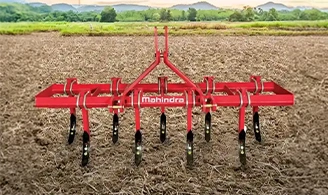
Maize requires earthing-up during its growth phase to support stem development and reduce lodging (falling over). An inter-row cultivator helps perform this task while also removing weeds between rows.
Benefits:
- Supports plant stability
- Improves moisture retention
- Minimizes weed competition
6. Maize harvester or reaper – for timely harvesting
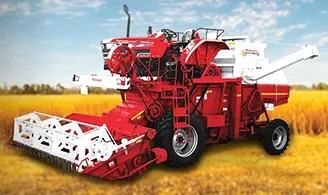
Timely harvesting is essential to avoid grain loss due to over-maturity or pest infestation. A maize harvester or reaper efficiently cuts and collects mature maize, reducing post-harvest losses.
Benefits:
- Saves time during harvest
- Reduces labor dependency
- Preserves grain quality
Choosing the right tractor for maize farming
The right tractor is just as important as the implements. Here’s what to consider when selecting a tractor for maize farming:
- Horsepower (HP): 35–55 HP is ideal for small to medium maize farms. Larger farms may require 60+ HP.
- Hydraulic lifting capacity: Should be compatible with the implements used (especially seeders and sprayers).
- Fuel efficiency: Look for tractors with high torque and lower fuel consumption.
- Ease of operation: Features like power steering, gear positioning, and ergonomic controls reduce operator fatigue.
Brands like Mahindra OJA, JIVO, Yuvo Tech, XP, SP and Arjun offer reliable tractors suited for maize cultivation.
Tips to maximize maize yields with mechanization
- Follow a crop calendar: Timely land preparation, sowing, and harvesting are key to success.
- Use certified seeds: Always opt for high-quality, disease-resistant maize varieties.
- Optimize seeding depth: Generally, maize should be sown 3–5 cm deep for best germination.
- Maintain machinery: Regular maintenance ensures better efficiency and longer lifespan.
- Combine implements efficiently: Use combo machines (e.g., seeder + fertilizer) to save time and resources.
class="heading-third mt-2 mb-1"Government support and subsidies
Many state governments and agricultural departments offer subsidies for tractor implements and machines like the maize seeder machine. Farmers can benefit from:
- Custom Hiring Centers (CHCs)
- Equipment rental services
- Subsidized purchase of tractors and implements
- Training and demo programs on mechanized maize farming
Check with your local agriculture office or Krishi Vigyan Kendra (KVK) for eligibility and application procedures.
Conclusion
Mechanization through tractors and specialized tractor implements is the key to unlocking the full potential of maize farming. Whether it’s precision sowing with a maize seeder machine or efficient weed control using a sprayer, each tool adds value by increasing efficiency, reducing costs, and ultimately boosting yield.
As demand for maize continues to rise, investing in the right equipment can give farmers a competitive edge. By integrating technology into traditional practices, today’s farmers can ensure a better tomorrow.
Interested in the best implements for your maize farm?
Visit your nearest agriculture machinery dealer or contact your district agricultural officer for expert recommendations and subsidy information.










